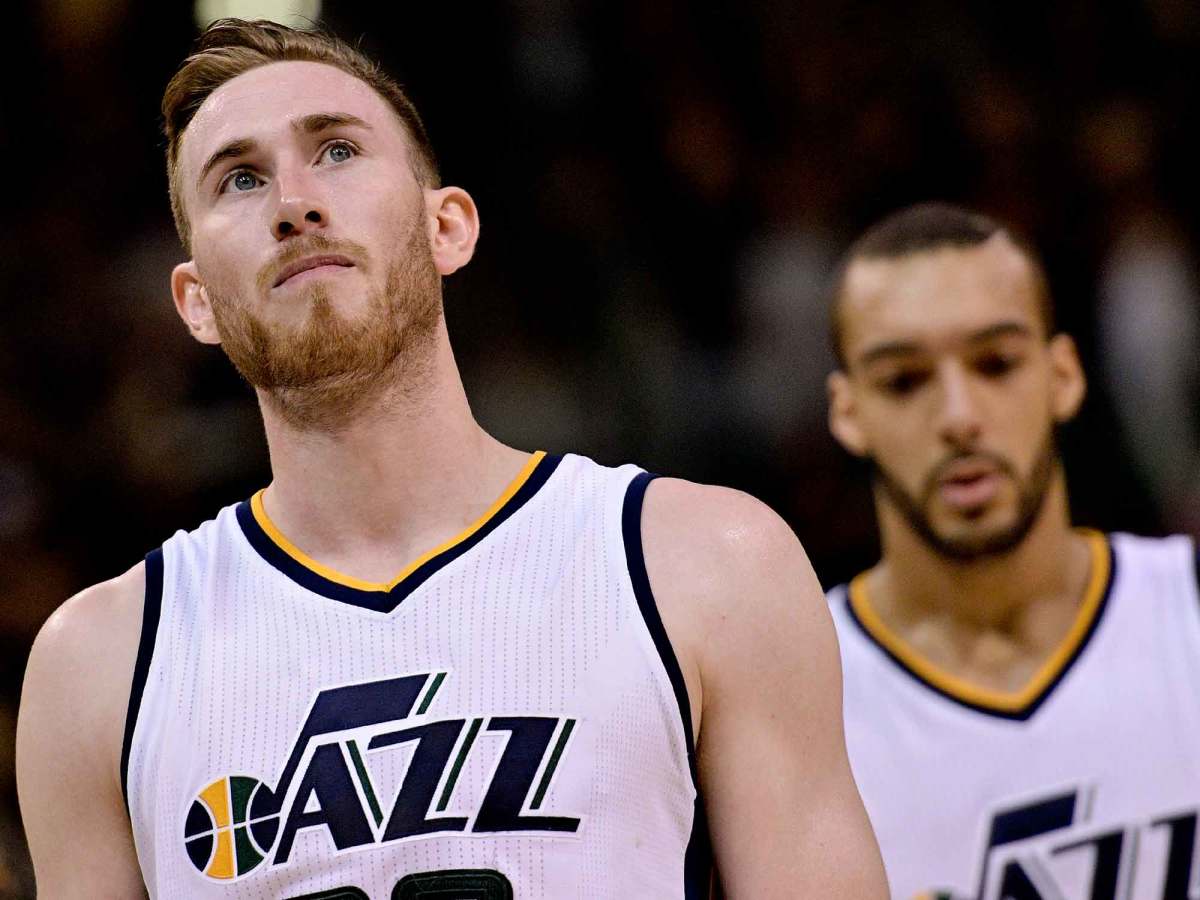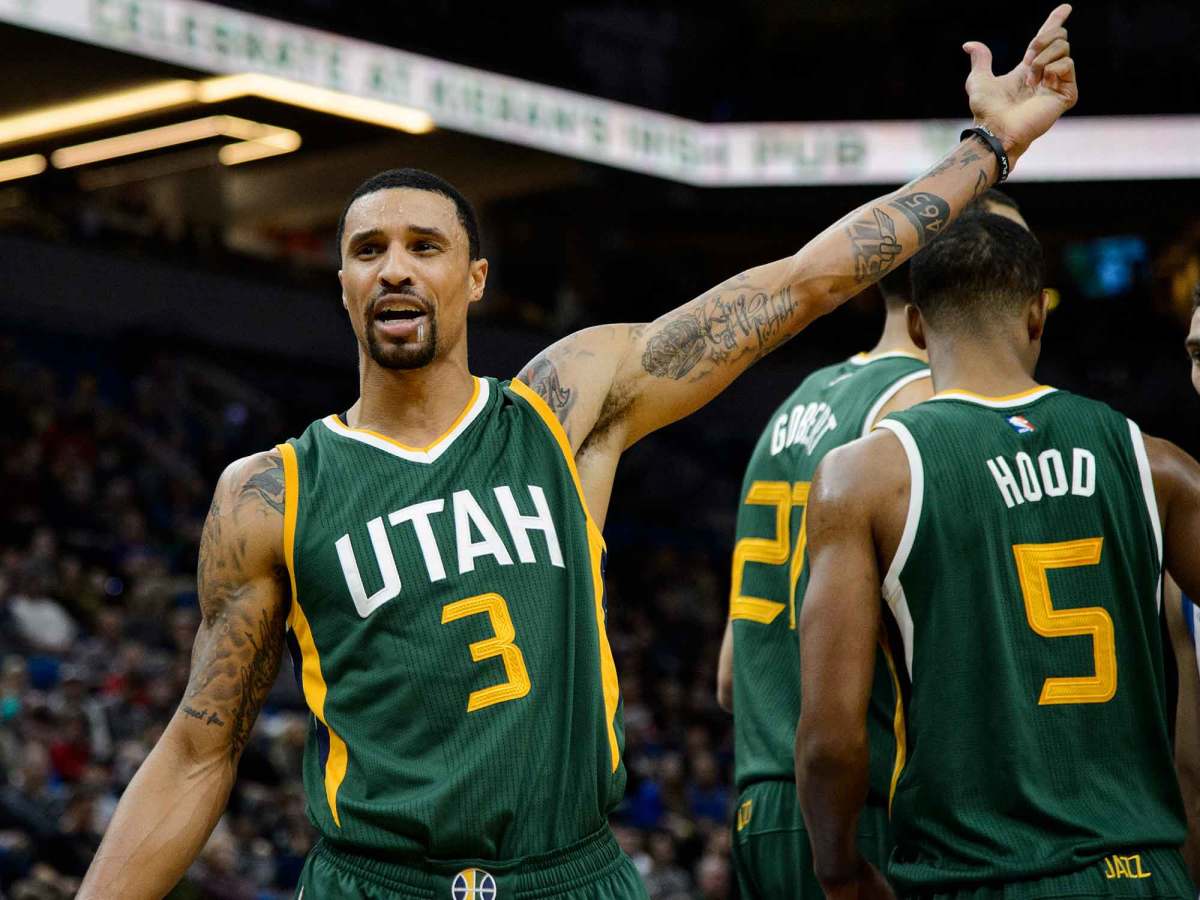NBA Off-Season Preview: Jazz's Future Hangs In The Balance

While the NBA playoffs are still going, the 2017 off–season is rapidly approaching for many teams with massive decisions to make. CBA expert Danny Leroux breaks down the major challenges and opportunities for the Utah Jazz in The Crossover's NBA Summer Preview series.
After years of anticipation, the Utah Jazz finally started delivering on their potential, winning 51 games in the regular season and defeating the Clippers in seven games in the first round. Astonishingly, they were able to reach those heights without their full complement of players, as the projected starting five of George Hill, Rodney Hood, Gordon Hayward, Derrick Favors and Rudy Gobert only played 152 minutes together in 14 games during the regular season. Even so, Hayward emerged as an All-Star and All-NBA candidate while Gobert improved offensively and dominated defensively. The 2016-17 season demonstrated the power and potential of the Jazz, but it all hangs in the balance in an absolutely massive summer for the franchise and general manager Dennis Lindsey.
Here are three key storylines to watch for the Jazz this offseason:

Gordon Hayward’s free agency: Three years ago, Utah let Hayward hit restricted free agency and sign an offer sheet with the Hornets for three seasons (with a fourth–year player option) instead of a longer contract with them. Now, Hayward will be highly in demand with max contract offers from multiple teams. While the Jazz have a strong case to retain him considering their success and bright future, Boston has a similarly strong roster with significant draft assets and Hayward’s college coach Brad Stevens. Being able to offer a longer contract and larger annual raises helps Utah but the prospect of losing a young star without compensation should be absolutely terrifying.
George Hill’s free agency: Hill has been a perfect fit with the Jazz, creating with the ball in his hands and making defenses pay in catch-and-shoot situations. However, part of the reason the 31-year old was available for a late lottery pick was his pending free agency. Like Hayward, Hill will be an unrestricted free agent for the first time. His situation is even more complicated because of greater variance in salary since the veteran is not necessarily going to get max offers. Even so, Hill’s skillset makes him desirable around the league and the Jazz would have significant trouble replacing him so he can exert pressure on the front office. Another fascinating wrinkle is that these two sides had the ability to hammer out an extension and could not get it done. That could reflect a difference in valuation that could reappear this summer.
Joe Ingles’s restricted free agency: As a restricted free agent, Ingles’s situation is far clearer. As a third–year player, the Aussie is not subject to the Gilbert Arenas provision, so teams can offer him any amount up to his maximum. Utah’s ability to match any offer should chill the market for Ingles but he could produce a strong offer sheet after the narrow pool of high-end wings choose their teams (and a series of other franchises desperately need one). As a side note, the NBA’s rules concerning free agency are tremendously unfair to players who join the league when they are older, as Ingles will be in his 30s before his first time on the truly open market.

Potential Free Agents: Gordon Hayward ($16.7 million player option), George Hill (Unrestricted), Joe Ingles (Restricted), Boris Diaw (Non-Guaranteed), Shelvin Mack (Unrestricted), Raul Neto (Non-Guaranteed), Jeff Withey (Unrestricted) and Joel Bolomboy (Partially Guaranteed)
Likely Cap Space For 2017: None
Realistic Maximum Contract Offer For 2017 (using $101M estimate): $26.9 million if they lose Hayward, Hill and Diaw
After Sweeping Jazz, Warriors Should Root For Rockets To Beat Spurs
2017 Draft Assets: Own first (24th overall), Warriors’ first (30th overall), Detroit’s second (42nd) and own second (55th)
Potential Targets: If Hayward and Hill return, Utah will need to maximize the Taxpayer Mid-Level exception and sign a big man whether or not they retain Diaw. An ideal candidate would be someone who could play power forward and slide to backup center when necessary, but those will be hard to find for $5.2 million. Mike Muscala looks to be the best fit but he is still an unlikely option since the Jazz would still have Gobert and Favors above him on the depth chart. Alternatively, Ersan Ilyasova and Anthony Tolliver are power forward fits while Willie Reed, Roy Hibbert or Tiago Splitter could back up Gobert. One fascinating possibility would be former Utah Ute Andrew Bogut if he cannot find a suitor offering a larger role.
Pressure Scale: 10. The Jazz are on a windy mountain road without a guardrail. If Hayward and Hill return, they could be a serious contender in the West if they can get their best players healthy at the same time. If either leaves, it will be exceedingly hard to replace them and that departure could make it more likely for the other to head elsewhere, too. After all, Hayward knows all too well how hard it can be to win without a talented point guard and it would make Boston look much better by comparison. Furthermore, giving an extension to Gobert last summer replaced his low cap hold with a $21.2 million salary, further reducing the Jazz’s cap space should that become necessary.
NBA Off-Season Preview: Should The Raptors Keep The Band Together?
State of the Franchise: Maintaining, hopefully. After years of exciting possibilities, Utah's best-case scenario this summer is retention. Hayward, Hill and Ingles will not come cheap but they have a bright future with all of them together. Failing to use their 2016-17 salary cap space to renegotiate and extend either Hill or Derrick Favors also left them with more complicated negotiations with both. Favors’s free agency next summer may put some pressure on the team to move him ahead of time if they are worried about bringing him back. While Utah could simply cut Diaw to clear extra salary cap or luxury tax room, another team could be very interested in him at his $7.5 million salary for next season, which could create another small asset. The other key element which may affect the Jazz this off–season is ownership’s willingness to pay the luxury tax long term. Utah’s crop of talented young players have largely moved from bargain rookie scale deals to more fully valued contracts and that sets the table for very expensive teams moving forward. If their ownership is concerned about those costs, they could seek to mitigate them as early as this summer. Utah can also negotiate extensions with both Rodney Hood and Dante Exum, but that will likely occur after they have a clearer vision of what the rest of their team will look like. Even so, it adds to a truly massive off–season for Lindsey and the Jazz.
